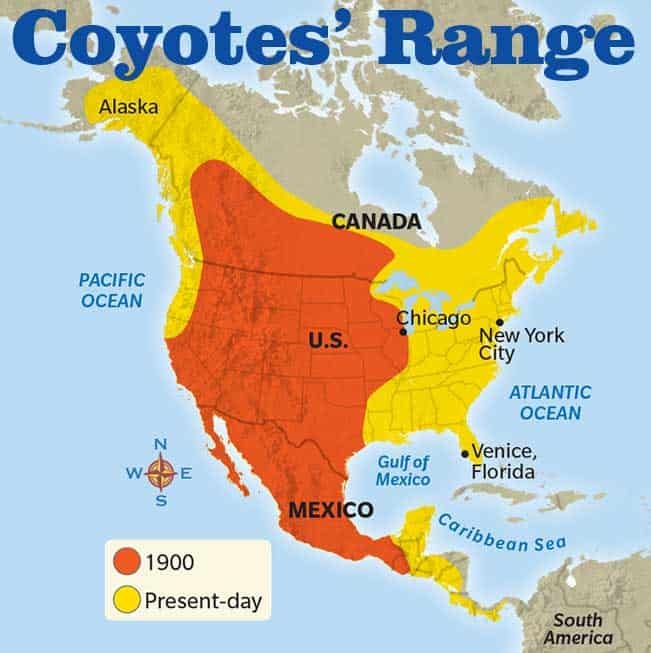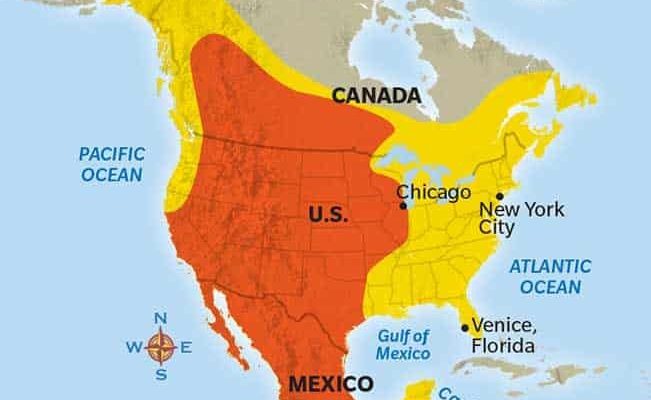
Coyotes, or *Canis latrans*, are remarkable animals with a broad range. From the snowy peaks of the Rocky Mountains to the arid expanses of the southwestern deserts, they manage to make their mark. You might be wondering how they adapt to such varying conditions and why that matters. Understanding their habitats not only reveals the secret life of coyotes but also shows us how human activity impacts their survival.
Understanding Coyote Habitats
Coyotes are incredibly versatile when it comes to choosing their homes. They can be found in various environments, making them one of the most adaptable species in North America. Let me break it down for you. Coyotes thrive in a mix of landscapes, including:
- Forested Areas: They love the cover provided by trees, which offers protection and hunting opportunities.
- Grasslands: Open fields give coyotes the chance to see predators and prey alike.
- Deserts: Here, they’ve learned to survive with little water, hunting at twilight for food.
- Urban Landscapes: Yes, you read that right! Coyotes have moved into cities, adapting to urban life.
These environments not only provide shelter but also access to food and mates. Coyotes are known for their resourcefulness, often hunting smaller animals like rabbits and rodents, but they also scavenge when necessary. Their ability to adapt is what allows them to thrive in diverse settings.
Geographical Distribution of Coyotes
Now, let’s talk about where exactly coyotes can be spotted. They have a vast geographical range that covers most of North America. From the bustling streets of Los Angeles to the serene forests of Canada, coyotes are everywhere!
In the United States, they are especially prevalent in:
- The West: States like California, Nevada, and Montana provide plenty of open land.
- The Midwest: Regions such as Illinois and Ohio have seen growing populations, especially in rural areas.
- The East: Coyotes have expanded into the eastern parts, including New York and Pennsylvania, adapting well to suburban areas.
Canada and parts of Mexico also serve as critical habitats for coyotes. They are even found in some areas of Central America, showcasing their adaptability.
Urban Adaptation of Coyotes
You might be surprised to learn that coyotes are making themselves at home in cities. They’ve developed a knack for living alongside humans while staying out of sight. Here’s how they do it:
1. Food Sources: Urban areas provide an abundance of food. From trash cans to small pets, coyotes have a diverse menu available.
2. Shelter: They often seek refuge in parks, green spaces, and even large backyards. These places offer solitude and safety from larger predators.
3. Time of Activity: Coyotes are mostly nocturnal. They tend to hunt and explore at night when human activity is at its lowest.
Living close to humans isn’t without challenges. Coyotes sometimes get into trouble, leading to conflicts with people. However, their ability to adapt is impressive, reflecting their cleverness.
Coyote Behavior and Habitat Preferences
Coyotes are not just solitary creatures; they can also be highly social. Their social structure plays a significant role in where they choose to live. They often form small packs, which help them defend territory and hunt more effectively.
According to studies, coyotes prefer habitats that provide:
- Cover: They thrive in areas with dense vegetation, creating safe spots to rest and raise young.
- Power Lines and Roads: Surprisingly, they also utilize human-made structures to navigate and hunt.
- Water Sources: Access to water ensures they stay hydrated, especially in dry regions.
Understanding the behavior of coyotes helps us appreciate their adaptability. Their choices in habitat are often driven by instinct and learned experiences, allowing them to survive and thrive.
The Impact of Human Activity on Coyote Distribution
The rise in coyote populations in urban areas is largely influenced by human activity. As cities expand, coyotes are forced into new territories. This can lead to fascinating observations but also potential issues. Here’s why this matters:
1. Urban Sprawl: As we build towns and cities, we encroach on coyote habitats. They adapt, but this can lead to conflicts as they search for food and shelter.
2. Roads and Highways: Coyotes often face dangers from traffic. Understanding their paths can help create safer passages.
3. Wildlife Management: As coyote populations increase, effective management strategies are necessary to ensure both coyotes and humans can coexist safely.
Awareness of these impacts can help us create a balanced relationship with wildlife. Our choices directly influence their habitats and survival.
Coyotes are remarkable survivors, showing us just how adaptable nature can be. Their habitats range from wild forests to buzzing urban centers, reflecting their ability to thrive in diverse environments. As we learn more about where coyotes live, it’s crucial to consider how we, as humans, can respect their space and coexist with these incredible animals.
Next time you hear a coyote howl, remember the story behind it. They’ve carved out their niche in the world, and much like us, they just want to find a place to call home. Understanding this can lead to a better appreciation of our environment and the wildlife that shares it with us.

